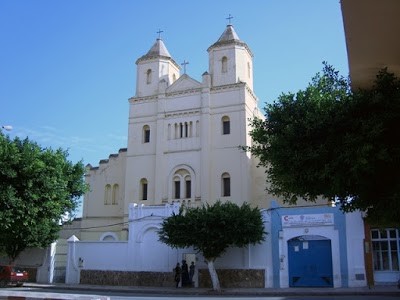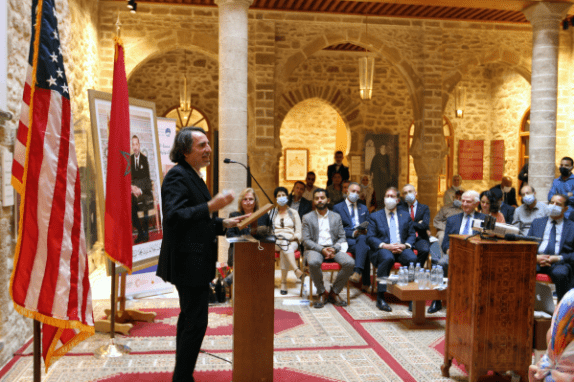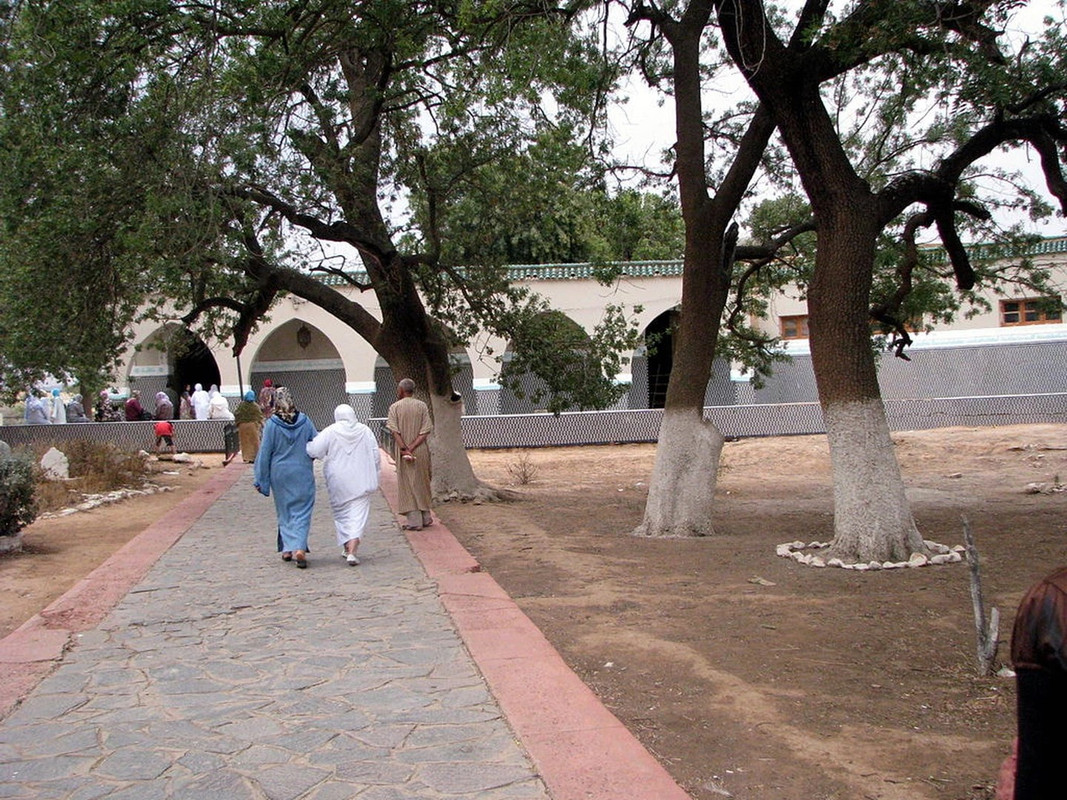Religious spaces offer a location of home, identity, and belonging. They hold particular importance for the Christian community in Morocco, where Islam is the overwhelming religion. Christians have often been seen as foreigners due to their faith, even with Morocco’s tolerance as outlined in the country’s constitution. The Oriental region, encompassing twelve provinces in eastern Morocco, is not isolated from the nation’s multireligious culture. If one travels far enough, they will be sure to find countless heritage sites that provide a haven for Christians.
A place like the shrine of Sidi Yahya Ben Younes, or John the Baptist, is one of those havens for all Moroccans to gather. This tomb, located in the province of Oujda, is said to contain the remains of John the Baptist, a Christian saint. A location of shared history and interaction, “Oujda has been the scene of many battles with [Amazigh] groups, Arabs, Turks, and, in more recent history, [the] French, all [of whom] fought over the area at some point.” Many believe that different parts of the saint’s remains were carried all across the world by people of different belief systems. It is believed that part of Sidi Yahya is buried in Oujda—either underneath the trees surrounding the shrine or within the tomb itself. But rather than a place only for worship and veneration of saints, it stands as a place of shared community. People gather for picnics, for swimming, or for a moment of reflection. Sidi Yahya’s shrine represents the neighborliness of the three Abrahamic faiths in Oujda.

La Iglesia Santiago el Mayor is located in Nador. Photo: https://maps123.net/en/MA/iglesia-santiago-el-mayor-p145591
There is a similar story of interconnection surrounding a church in the province of Nador, the Iglesia Santiago el Mayor. The city of Nador is close to Melilla, an independent Spanish territory, and is evidence of the historical conjunction between Morocco and Spain. Founded in 1921, it was once the center of a larger Christian community that has since declined significantly. Built following a turbulent period of conflict during the Melillan Campaign around 1909, the Spaniards wanted to build a church that would be a place of retreat and safety. In the time of Moroccan revolt for independence against French and Spanish colonization, the church became a station of relief and protection for military forces of the Spanish side. Forces stood by to defend the church, a pillar of the community. Today it remains a symbol of refuge and peace. Upon entering the church, it is said that one experiences “a great feeling of peace and seclusion that [makes] you forget the worldly noise of life outside.”
Acknowledging these heritage sites therefore recognizes Christians as part of the greater community. Even though Christian and Jewish communities in Morocco have seen a positive change in the relationship dynamics between religious groups, the recognition of interfaith communities is valuable and advances social solidarity that is integral to Morocco’s rich historical, cultural and ethnic identity.
Aira Matin is a former HAF intern and a student at the University of Virginia.
This article was completed with the support of the United States Agency for International Development (USAID) Religious and Ethnic Minorities Activity (REMA), and the High Atlas Foundation is solely responsible for its content, which does not necessarily reflect the views of the USAID or the Government of the United States






